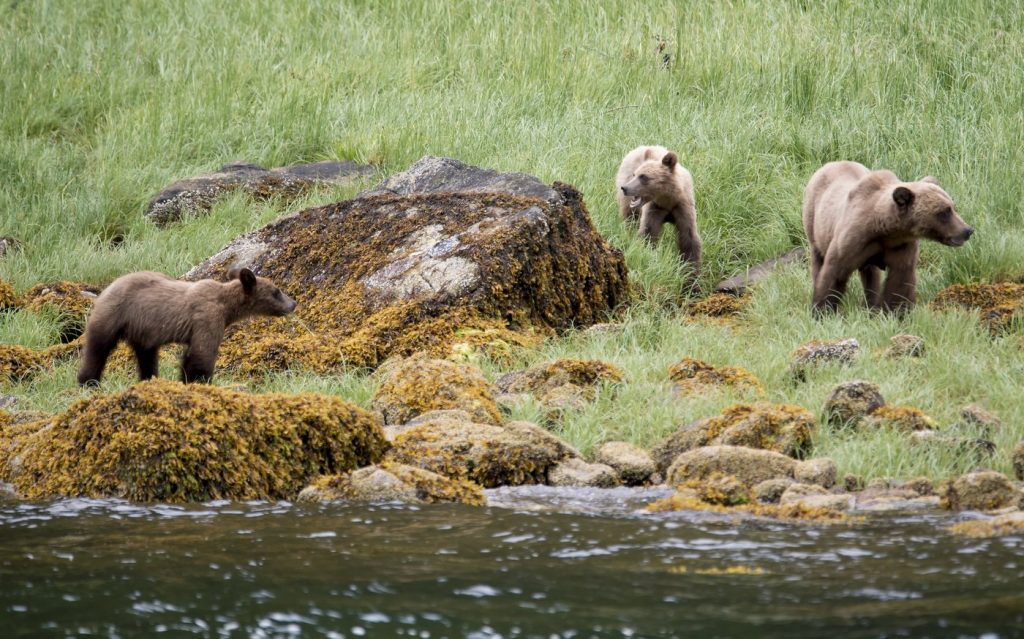A recent study conducted by British Columbia-based researchers reveals that grizzly bears visiting ecotourism areas along the central coast of the province are less likely to encounter conflicts with humans in downstream communities. Jason Moody, associated with the Nuxalk Nation's fisheries and wildlife program, emphasized the study's findings, indicating that properly conducted ecotourism does not significantly contribute to bear-human conflicts.
Moody highlighted the longstanding relationship between the Nuxalk and other First Nations with bears, noting it spans centuries, if not thousands of years, particularly in the Great Bear Rainforest. However, he acknowledged that increased human activity, especially in conjunction with poor salmon runs, has led to a rise in conflicts between grizzly bears and humans.
The study published in the Canadian Journal of Zoology stems from the inquiry into whether bears frequenting ecotourism areas become accustomed to human presence, possibly leading to higher conflict rates. Lead author Kate Field explained that while some studies have suggested wildlife may exhibit increased boldness due to tourist interactions, their research presented a different outcome in the context of the Bella Coola Valley.
The researchers discovered that grizzly bears visiting ecotourism sites along the Atnarko River were significantly less likely to engage in conflicts with humans in nearby communities located 40 to 60 kilometers downstream. Utilizing hair sampling techniques, the study identified 118 grizzly bears in the area, with Field referring to the riverbanks as "DNA libraries" that facilitate tracking bear movements.
Data was collected during the late summer and fall salmon runs between 2019 and 2021, allowing the identification of 34 bears that explored the ecotourism zone at least once. By comparing these samples with "conflict samples" from bears that were captured or euthanized by the B.C. Conservation Officer Service, the researchers found that only one of the bears that had encountered conflict had also been detected at ecotourism sites along the Atnarko River. In contrast, the other 29 bears involved in conflicts were not found in the ecotourism sampling areas.
This pattern suggests that the bears engaging with ecotourism activities are not experiencing conflicts with humans as expected, according to Field. However, a deeper analysis was warranted to account for the possibly larger population of grizzlies that did not participate in ecotourism. Ultimately, researchers determined that for the observed levels of conflict to occur by chance, nearly 674 non-ecotour bears would need to exist, close to double the highest estimated population in the area.
Consequently, the study concluded that bears visiting ecotourism sites have a lower probability of engaging in conflicts with humans than would be predicted by chance. Furthermore, the research points to various human-related factors, such as fruit trees and salmon-cleaning stations that attract bears, as alternative drivers of conflict.
To mitigate these conflicts, the Nuxalk Nation has implemented measures like electric fencing around salmon-processing sites during harvest seasons. Nevertheless, the availability of salmon plays a crucial role in the dynamics between bears and humans. Moody observed a correlation between salmon runs and reduced bear activity around human dwellings, noting that years with abundant salmon see conflict levels plummet.
Field referenced previous B.C.-based research showing that grizzly killings by conservation officers or private citizens rose by 20 percent for every 50 percent decrease in annual salmon biomass. This highlights the critical relationship between the availability of salmon to bears and the occurrence of human-bear conflicts.
By emphasizing that ecotourism occurs in regions with high salmon spawning activity, researchers speculate that the bears have sufficient access to food in the wild, reducing the need to venture into human-populated areas searching for sustenance.










